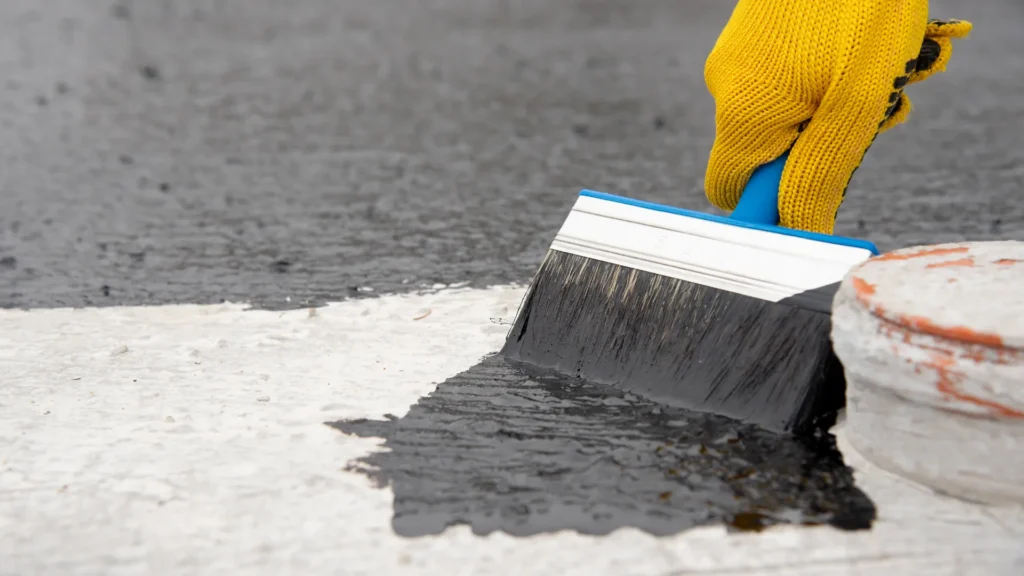
Common Waterproofing Failures And the Chemicals That Can Fix Them
Waterproofing is one of the most critical steps in building construction. Yet, even when applied with good intentions, many systems fail due to poor preparation, unsuitable products, or lack of maintenance. These failures not only cause leaks but also damage structures, reduce their life span, and increase repair costs.
At Midas Waterproofing, we believe the right combination of construction chemicals and expert application can solve most waterproofing challenges. Let’s look at the Common Waterproofing Failures and the chemical solutions that effectively address them.
1. Poor Surface Preparation
Problem: Waterproofing coats often fail when the base surface isn’t cleaned or treated properly. Dust, oil, laitance, and old coatings reduce adhesion.
Signs: Flaking, bubbling, or peeling of the waterproofing layer within a short time.
Solutions:
- Use bonding primers to enhance adhesion.
- Apply polymer-modified crack fillers or repair mortars before waterproofing.
- Ensure proper cleaning with surface preparation chemicals or etching agents.
2. Cracks and Joint Failures
Problem: Structural movement, temperature fluctuations, and expansion joints create cracks that break the waterproof barrier.
Signs: Water seeps through wall-floor junctions, expansion joints, and visible cracks.
Solutions:
- Seal joints with PU or silicone sealants that stay flexible.
- Apply elastomeric liquid membranes for surfaces prone to expansion and contraction.
- Use crystalline waterproofing chemicals that penetrate into concrete and block water pathways.
3. Seepage from Hydrostatic Pressure
Problem: Underground structures, basements, or tanks often face water pressure from the soil or groundwater.
Signs: Damp basement walls, wet patches, or active leakage during rains.
Solutions:
- Cementitious coatings mixed with waterproofing additives for positive and negative side protection.
- Integral waterproofing admixtures to reduce concrete porosity.
- Crystalline technology that forms a permanent barrier against water penetration.
4. UV and Weather Damage
Problem: Constant sun exposure, heavy rain, and extreme heat degrade waterproof coatings over time.
Signs: Cracking, chalking, fading, and eventual water leakage from roofs and terraces.
Solutions:
- Apply UV-resistant elastomeric coatings.
- Reinforce with polyurethane or acrylic membranes that stay flexible.
- Use protective top coats to shield the main waterproofing system.
4. UV and Weather Damage
Problem: Constant sun exposure, heavy rain, and extreme heat degrade waterproof coatings over time.
Signs: Cracking, chalking, fading, and eventual water leakage from roofs and terraces.
Solutions:
- Apply UV-resistant elastomeric coatings.
- Reinforce with polyurethane or acrylic membranes that stay flexible.
- Use protective top coats to shield the main waterproofing system.
5. Drainage and Design Issues
Problem: A flat surface without proper slope causes water stagnation. Poor detailing around drains or pipes lets water seep in.
Signs: Water ponding on terraces, leaks near outlets, and damp corners.
Solutions:
- Correct slope using polymer-modified repair mortars.
- Treat pipe penetrations and corners with flexible sealants.
- Apply seamless liquid waterproofing membranes across flat areas.
6. Lack of Maintenance
Problem: Even the best waterproofing needs regular upkeep. Neglecting re-coating or small repairs leads to major failures.
Signs: Recurring damp patches, efflorescence, and mold growth.
Solutions:
- Plan regular re-coating cycles with elastomeric or acrylic waterproofing systems.
- Apply water-repellent sealers (silane/siloxane) for additional protection.
- Use cleaning and restoration chemicals before re-application.
Why Choose Midas Waterproofing
With years of experience in handling Kerala’s heavy monsoons and challenging climate, Midas Waterproofing offers tailor-made chemical solutions:
- Crystalline coatings for tanks, basements, and foundations.
- Polyurethane and elastomeric membranes for roofs and terraces.
- Water-repellent sealers for masonry and concrete.
- Cementitious and polymer-modified systems for high-damp environments.
Our solutions are backed by proven chemical technology and expert application to ensure long-term durability.
Final Thoughts
Most Common Waterproofing Failures happen due to wrong product selection, poor detailing, or lack of maintenance. The right construction chemicals can not only fix these issues but also extend the life of your structure.
If you’re facing leaks, dampness, or recurring waterproofing problems, Midas Waterproofing has the expertise and solutions to protect your building for years to come.
